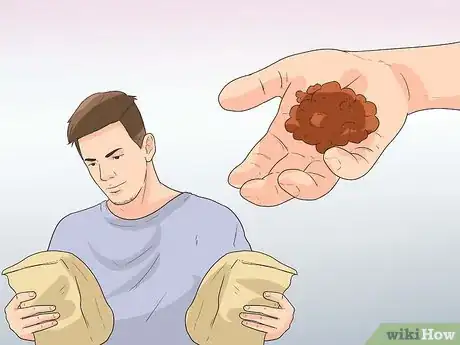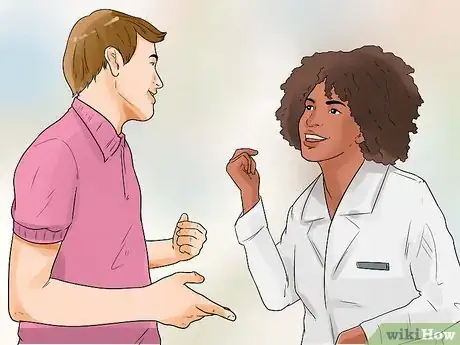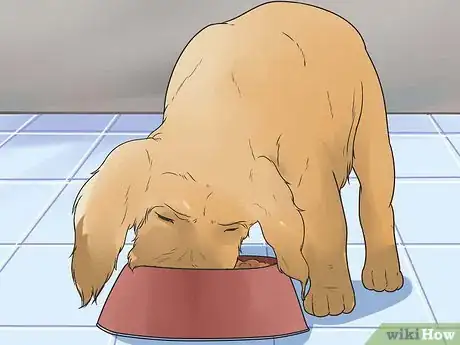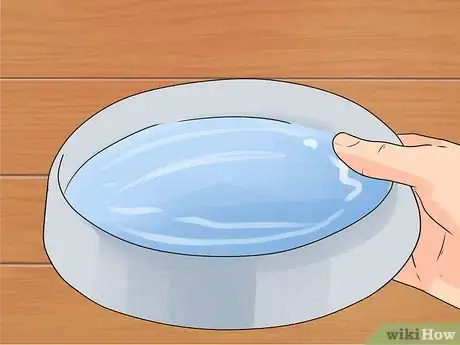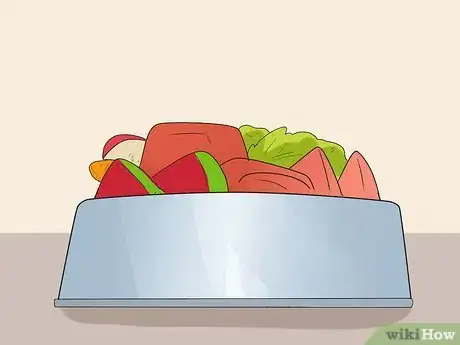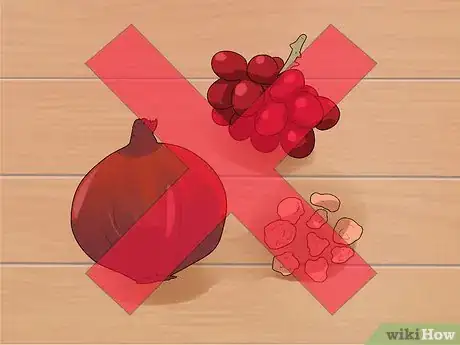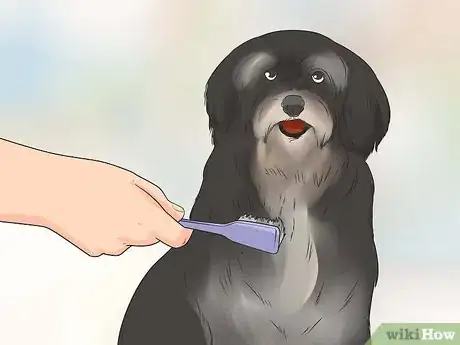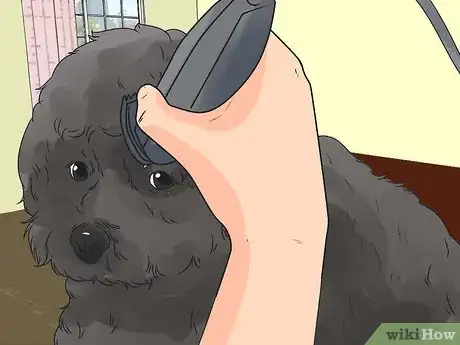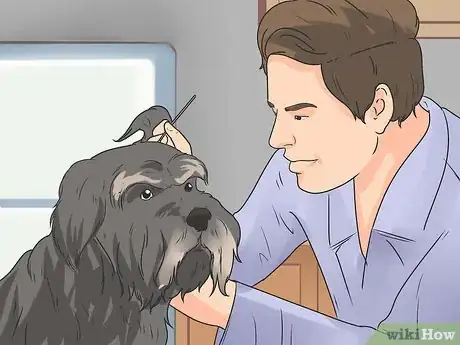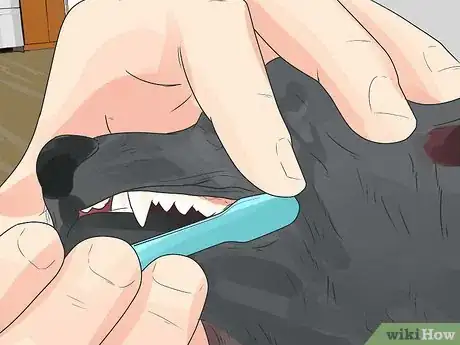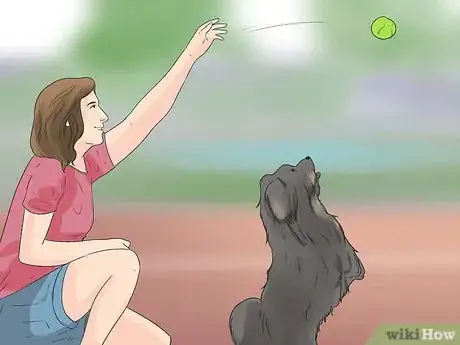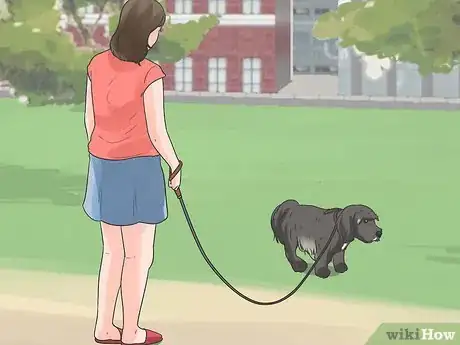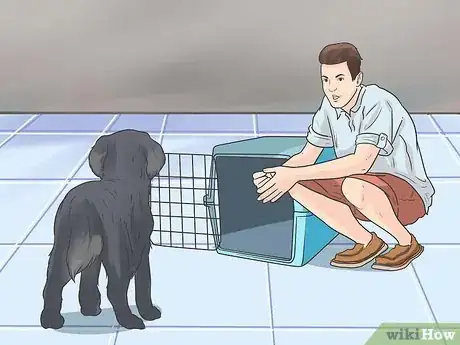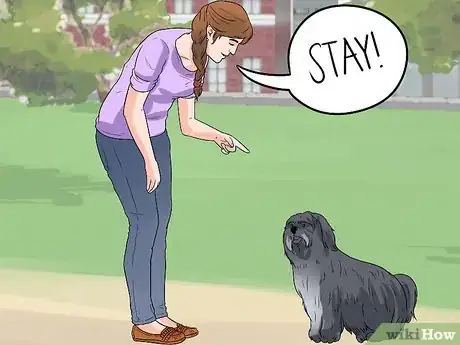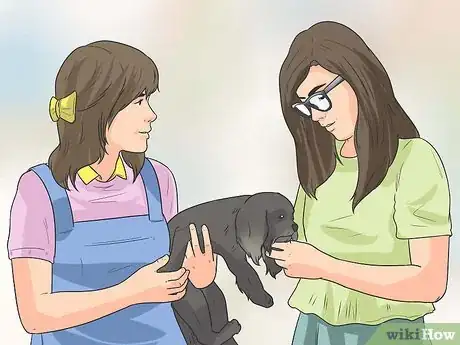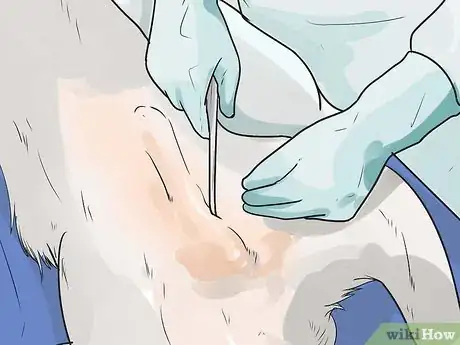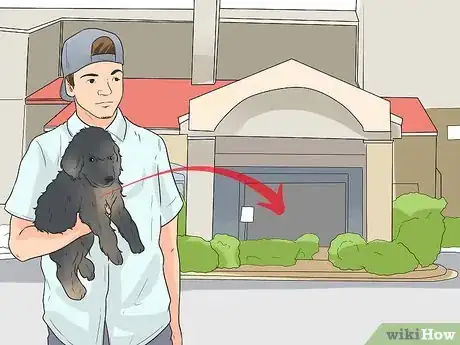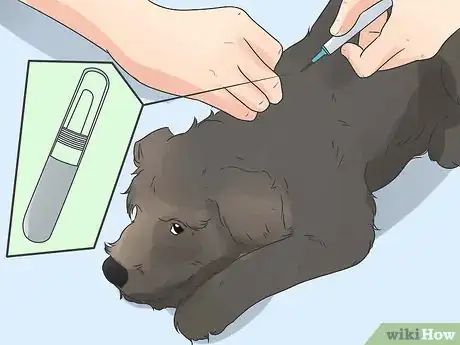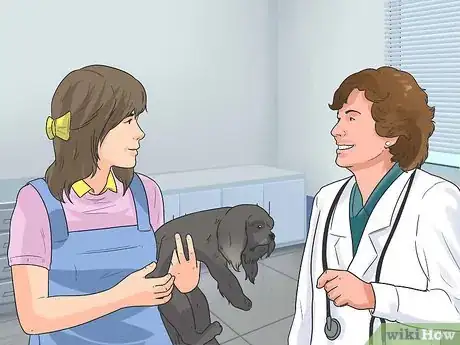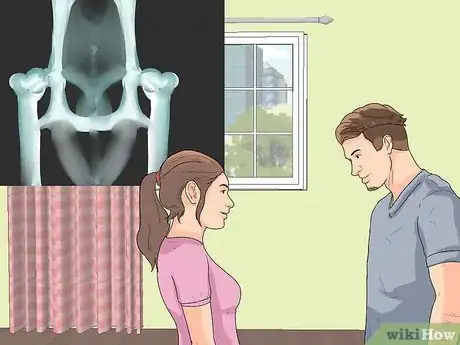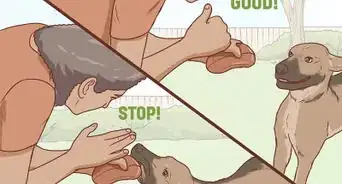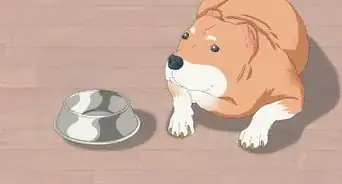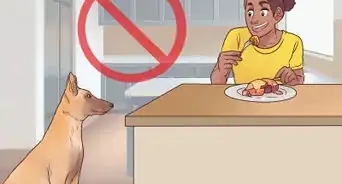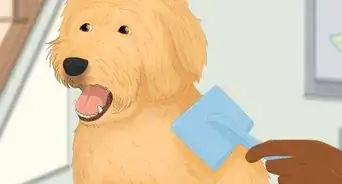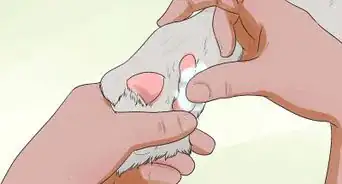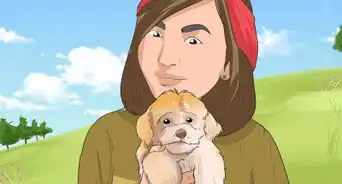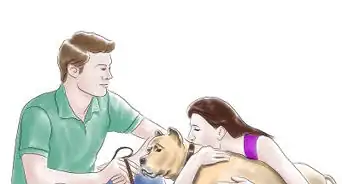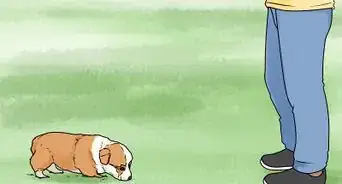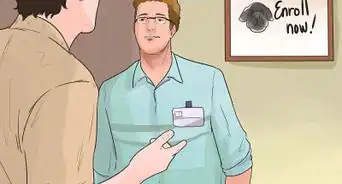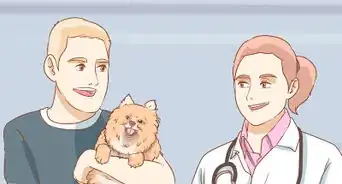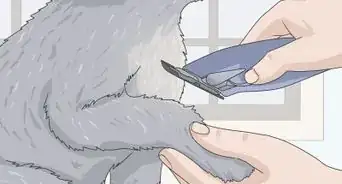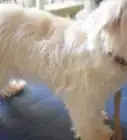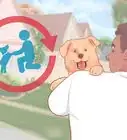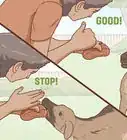This article was co-authored by Pippa Elliott, MRCVS. Dr. Elliott, BVMS, MRCVS is a veterinarian with over 30 years of experience in veterinary surgery and companion animal practice. She graduated from the University of Glasgow in 1987 with a degree in veterinary medicine and surgery. She has worked at the same animal clinic in her hometown for over 20 years.
There are 18 references cited in this article, which can be found at the bottom of the page.
wikiHow marks an article as reader-approved once it receives enough positive feedback. In this case, 100% of readers who voted found the article helpful, earning it our reader-approved status.
This article has been viewed 20,198 times.
The Havanese is Cuba’s national dog and they make great companions. This long-haired, small dog is smart, playful, and cute. However, the long, double coat on this dog means that owners must put lots of time and effort into keeping the dog well-groomed.[1] Not tending to a Havanese’s coat could cause him to be covered in painful mats and can even interfere with his vision. If you have a Havanese, then you will need to learn all about how to feed, groom, train, and protect him.
Steps
Feeding Your Havanese
-
1Choose a food that is meant for small breeds. It is important to choose a dog food that will meet the nutritional needs of your pet, so make sure that the food you choose is of high quality. You should also choose a food that is meant for small breed dogs. Regular dog food pieces may be too large for your Havanese to chew, while food meant for small dogs comes in smaller pieces.[2]
- If you can’t decide on what to feed your Havanese, then check with your Havanese’s breeder or veterinarian.
- Also, keep Havanese’s age in mind when choosing food. If your Havanese is a puppy, then you will need to feed him puppy food. If your Havanese is a senior, then you will need to feed him senior food.
-
2Consult with a pet nutrition expert if plan to make your dog’s food. Dogs have different nutritional needs than humans and some human foods can even kill them. If you plan to cook for your Havanese, then you should talk to an expert on pet nutrition first.
- Your veterinarian is a good place to start, but she may refer you to a specialist for advice.
Advertisement -
3Maintain a regular feeding schedule. The number of times per day that you will need to feed your Havanese depends on his age. Your Havanese will need to be fed often while he is a puppy and less often as an adult. Talk to your veterinarian if you are unsure about the right type of feeding schedule for your Havanese. In general, if your Havanese is:
- eight to 12 weeks, then feed her four times per day.
- three to six months, then feed her three time per day.
- six months to one year old, then feed her twice per day.
- past one year old, then feed her once per day.[3]
-
4Provide lots of clean, fresh water. Your Havanese must always have access to a bowl of fresh, clean water. Make sure to you replenish your Havanese’s water as needed and clean the bowl once per day.
- Place your Havanese’s water dish somewhere that he can access with ease.
- Try using a stainless steel or ceramic bowl. These tend to be more sanitary than plastic bowls.
-
5Give your Havanese some healthy treats. Treats are a great way to reward your Havanese, but you should not give too many treats to your Havanese or he may become overweight. If you want to feed your Havanese some treats try offering:
- cooked sweet potato slices
- broccoli
- baby carrots
- a couple of cooked green beans
- a few frozen peas or blueberries
- a couple of watermelon chunks
- a few slices of banana[4]
-
6Steer clear of toxic human foods. There are some foods that you can never give your Havanese because it could make her very sick or even kill her. These foods include:[5]
- alcohol
- caffeine
- avocados
- chocolate
- grapes and raisins
- walnuts, almonds, pecans, and macadamia nuts
- onions, garlic, and chives
- yeast
- xylitol[6]
Grooming Your Havanese
-
1Brush your Havanese’s coat at least once per week. Havanese have long double coats that do not shed, but their coats may become matted if not brushed often. Get your Havanese into the habit of being brushed at least once per week to keep her coat soft and tangle free.[7] Some people even recommend daily brushing to keep up with your Havanese’s coat.[8]
- Make sure that you get your Havanese used to brushing from a young age. Responsible breeders will groom their puppies to start getting them used to the process, but you will need to continue this process with your Havanese.
- Grooming is a good time to check for things like fleas, ticks, bumps, lumps, scabs, or other skin conditions that might need to be checked by your veterinarian.
-
2Bathe your Havanese as needed. Your Havanese will need a bath a few times per year to keep him smelling nice. Before you bathe your Havanese, make sure that you have removed all tangles from his hair or the hair may become matted.[9]
- Use special dog shampoo to wash your Havanese’s coat. Never use human shampoo on a dog.
- Rinse your Havanese’s coat well to get all of the shampoo out of his fur.
- Avoid getting water in your Havanese’s eyes, nose, and ears when you bathe him. Just clean his face with a damp cloth.
- Use conditioner to soften your Havanese’s fur. This will help keep his fur tangle free and prevent static during cold weather.[10]
-
3Tend to the hair around your Havanese’s eyes. Havanese have hair that often grows over their eyes, so they may experience tearing as a result. You will need to keep this area clean and try to keep the hair out of your Havanese’s eyes as well.
- Some people prefer to trim the hair down so that it does not grow into the puppy’s eyes, while other prefer to use a small amount of petroleum jelly to train the hairs to grow away from the puppy’s eyes.[11]
- If you are not comfortable trimming the hair around your Havanese’s eyes, then take him to a groomer for trims.
-
4Check and clean your Havanese’s ears often. A Havanese's ears may become dirty or even infected if not properly cared for. Make sure that you check your Havanese’s ears at least once per week.[12] You can clean them by wiping out the inside of the earflap with a piece of damp cotton gauze.[13] Do not try to clean the inner ear, just the inside of the earflap.
- If you start to notice that wax or debris is building up in your Havanese’s ears, then make an appointment for your dog to see the veterinarian as soon as possible.
-
5Clip your Havanese’s nails. Trimming your Havanese’s nails is also an essential part of good grooming.[14] If you notice that your Havanese’s nails are clicking on hard floors, then it is time for a trim.
- Use a special guillotine style clipper for dog’s nails. You can also try an electronic nail grinder if using a clipper makes you nervous, but your dog may need some time to get used to the vibration.
- Take care not to cut the quick when you clip your Havanese’s nails. The quick is the blood vessel that is inside of your dog’s nails. It will bleed and hurt your dog if you cut it.
- To avoid cutting the quick, only trim off a tiny sliver nail and then check the trimmed surface. If you notice a circle near the trimmed surface, then do not trim any more. The quick is just below this circle.
-
6Clean your Havanese’s teeth. Try to brush your Havanese’s teeth a couple of times per week.[15] Brushing will be easier if you start brushing your Havanese’s teeth when she is a puppy, but you can teach an adult Havanese to accept tooth brushing as well.
- Only use a special dog toothpaste to clean your Havanese’s teeth! Human toothpaste contains ingredients that may harm your dog.
Entertaining and Training Your Havanese
-
1Play with your Havanese daily. Havanese are not high energy dogs, but they do require some play time each day to stay healthy. These dogs are known for their clown-like antics and they love attention, so they can be quite fun to watch.[16] Make sure that you spend some time playing with your Havanese every day.
- Try different toys and games to see what your Havanese likes best. For example, your Havanese might like to play tug-o-war or she might prefer fetch. She might like squeaky toys or she might prefer a plain bouncy ball.
-
2Train your Havanese to go to the bathroom outside. Potty training a dog is a lot of work, but it is essential for preventing messes in your home. To teach your Havanese how to go potty outside, you will need to maintain a regular toileting schedule, praise your dog for going outside, and know how to react when an accident happens.[17]
- Take her outside once every few hours and take her to the same spot every time.
- Praise your Havanese when she goes potty outside.
- Never yell at your Havanese or hit her for going potty in the house. If she has an accident, just clean up the mess right away. Otherwise, she may try to use the same spot again.
- If you notice that your Havanese is about to go potty in the house, then clap your hands loudly to get her attention. Then pick her up and take her to her potty spot.
-
3Think about crate training your Havanese. Crate training will help with house training, help keep your dog away from furniture, when you have to leave, and give your Havanese a calm place to retreat to if she feels stressed.[18]
- Keep in mind that a crate is like a dog’s den. It should never be used as a punishment for your Havanese.
- If you decide to crate train your Havanese, then you will need a crate that is large enough for your dog to stand up, lay down, and turn around in. It should not be any larger than this.
-
4Teach your Havanese some basic commands. Havanese are smart dogs and they are easy to train. Some Havanese dogs have even performed in circuses. Teaching your Havanese some basic commands is also a good way for you to bond with her.
- Start with some simple commands, such as stay, sit, heel, lay down, and shake. If your Havanese masters these commands, then you can move onto something more advanced.
- Always use praise and rewards to motivate your Havanese. Never try to teach your Havanese a command by hitting or threatening her.
-
5Socialize your Havanese early. Havanese are excellent family dogs, but it is still a good idea to socialize your Havanese to make sure that she will be okay will all kind of people and situations. You may even want to consider enrolling your Havanese in a puppy socialization course after her first round of vaccinations. Be sure to expose your Havanese to:
- children and babies
- people of different genders, races, and sizes
- other dogs and cats
- people in hats, wearing coats, holding umbrellas, etc.
- loud noises and crowded places
- cars, bikes, skateboards, etc.
Protecting Your Havanese
-
1Spay or neuter your Havanese. Unless you plan to responsibly breed your Havanese, you should plan to have your dog spayed or neutered. Spaying and neutering prevents unwanted litters of puppies and also protects your dog’s health.[19]
- Female dogs that have been spayed tend to have fewer problems with cancer and infections.
- Male and female dogs that have been neutered or spayed are less likely to roam or engage in hormonal behaviors such as aggression.[20]
-
2Keep your Havanese inside. Havanese should not spend a lot of time outdoors due to their high-maintenance fur and their need to be around people all of the time. Your Havanese’s coat will get dirty and tangled if she spends too much time outdoors, so it is best to limit this time.
- Take your Havanese out to go potty regularly throughout the day and after she goes potty, bring her right back in unless you can be outside with her.
-
3Get a collar and an ID tag for your Havanese. Just in case your Havanese ever gets out of the yard, it is important to make sure that those who find her will have a way to bring her home. Make sure that your Havanese is always wearing a tag that includes your phone number and address.
- You may also want to have your Havanese implanted with a microchip to help people get her back to you if she ever gets lost.[21]
-
4Take your Havanese for regular veterinary check-ups. As soon as you take your Havanese home, you will need to make an appointment for her first veterinary checkup. Dogs need regular veterinary visits as well as vaccines, medicine, and other types of care to stay healthy. Some of the things that your Havanese will need include:
- Lyme disease vaccination
- Rabies vaccination
- Heartworm prevention medicine
- Spay or neuter operation
- Annual exams and vaccination boosters
-
5Be aware that Havanese are prone to some breed-specific diseases. Havanese are prone to few different conditions, so you will need to be on the lookout for symptoms of a problem. Some of the conditions that are more common in Havanese dogs include:[22]
- hip dysplasia
- eye disease
- patellar luxation (kneecap dislocation)[23]
- deafness
References
- ↑ http://www.akc.org/dog-breeds/havanese/
- ↑ http://www.akc.org/dog-breeds/havanese/care/#feeding
- ↑ https://www.aspca.org/pet-care/dog-care/general-dog-care
- ↑ http://pets.webmd.com/dogs/guide/healthy-dog-treats
- ↑ Kahn, C, (2010), The Merck Veterinary Manual, ISBN 978-0911910933
- ↑ https://www.aspca.org/pet-care/animal-poison-control/people-foods-avoid-feeding-your-pets
- ↑ http://www.akc.org/dog-breeds/havanese/care/#grooming
- ↑ http://www.havanese.org/education/new-owners/90-grooming-and-soaping
- ↑ http://www.havanese.org/education/new-owners/90-grooming-and-soaping
- ↑ http://www.havanese.org/education/new-owners/90-grooming-and-soaping
- ↑ http://www.havanesefanciers.com/basic_puppy_grooming
- ↑ http://www.akc.org/dog-breeds/havanese/care/#grooming
- ↑ http://www.havanese.org/education/new-owners/90-grooming-and-soaping
- ↑ http://www.akc.org/dog-breeds/havanese/care/#grooming
- ↑ http://www.akc.org/dog-breeds/havanese/care/#grooming
- ↑ http://www.akc.org/dog-breeds/havanese/care/#energy
- ↑ http://www.humanesociety.org/animals/dogs/tips/housetraining_puppies.html
- ↑ http://www.humanesociety.org/animals/dogs/tips/crate_training.html
- ↑ https://www.aspca.org/pet-care/general-pet-care/spayneuter-your-pet
- ↑ https://www.aspca.org/pet-care/general-pet-care/spayneuter-your-pet
- ↑ https://www.aspca.org/pet-care/general-pet-care/finding-lost-pet
- ↑ http://www.akc.org/dog-breeds/havanese/care/#health
- ↑ http://www.petmd.com/dog/conditions/musculoskeletal/c_multi_patellar_luxation
About This Article
To care for your Havanese dog, feed it a diet of quality dog food made specifically for small dog breeds because they are made in smaller pieces that are easier and safer for your dog to chew. Keep your dog on a regular feeding schedule, and ask your vet to recommend the best daily amount of food for your dog. In addition to its regular food, give your dog a small amount of fruits and veggies, like baby carrots or bananas, as an occasional treat. Because Havenese dogs have very long hair, you should brush it at least once per week to keep it from getting tangled and matted. You should also keep the hair around its eyes trimmed to keep their eyes from getting irritated by overgrown bangs. For more tips from our Veterinary co-author, like how to brush your dog’s teeth, keep reading!
